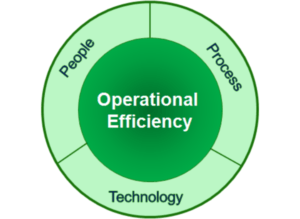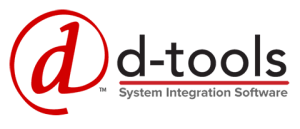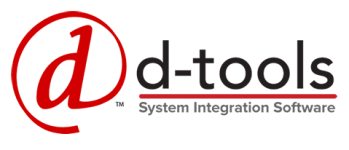9 Steps to Improve Operational Efficiency
 Your company’s ability to maximize the ratio of output to input affects how well your business operates as a whole. Whether you’re looking to increase profitability, enhance your customer experience, or streamline processes in response to the labor shortage, the solution can be to improve operational efficiency. A more efficient business can operate with reduced staff, and the business will be better positioned to pivot to accommodate challenges in the future.
Your company’s ability to maximize the ratio of output to input affects how well your business operates as a whole. Whether you’re looking to increase profitability, enhance your customer experience, or streamline processes in response to the labor shortage, the solution can be to improve operational efficiency. A more efficient business can operate with reduced staff, and the business will be better positioned to pivot to accommodate challenges in the future.
Improving operational efficiency is a multi-step process that takes time, but it’s well worth the effort. In the long run, your business will get that time back and more from a sleeker workflow.
Step 1. Use Performance Data to Set Benchmarks and Goals
Before you focus on improving efficiency, you need to establish a performance baseline for your business. This can be accomplished by setting goals and tracking the right metrics.
For example, you might track the meantime to complete a service call or to accomplish key project milestones. When you have performance data for your business, you can use it to create benchmarks for future work. Variations in your data, especially when it comes to missed benchmarks, can alert you to a problem in need of addressing.
Setting specific, measurable, achievable, relevant, and time-bound (SMART) goals to exceed performance benchmarks can help get staff invested in improving the efficiency of your business. In addition to setting SMART goals, establish ways to celebrate when those goals are met or exceeded. Meaningful ways to show staff appreciation, like raffles, bonuses, or time off, can help boost staff morale and keep your team invested in future projects.
Step 2. Implement Automation
One of the quickest ways to increase efficiency is through automation. Automating recurring tasks helps make the most of your staff’s time, ensuring employees focus on mission-critical duties.
You can use technology to automate everyday business processes like sending emails, recording data, running reports, and even chatting with customers.
With the right automation tools in place, you’ll see increased value from staff hours, since your team will be executing on responsibilities that truly benefit from their time and talents. Automating repetitive processes also helps keep staff more engaged by removing mundane tasks from their workflows.
Step 3. Create Open Lines of Communication
Implementing automation is one way to support your employees, but additional support efforts can help employees feel valued and appreciated. These efforts can improve your company culture, increase staff performance, and keep your team motivated and invested in your business.
For example, creating open lines of communication with employees allows you to better understand their strengths, interests, and individual styles of working. When you know these nuances, you can assign the staff best suited to a particular project or need, setting them up for success.
Communication is also key in ensuring team members aren’t overloaded with tasks they can’t handle or complete on time. While technology can provide measurable data, having a dialogue with your staff about their workloads lets you see the big picture, including personal life changes that can affect their performance.
Step 4. Adopt Digital Time Tracking
Speaking of measurable data, if you haven’t done so already, it’s essential to adopt digital time tracking practices. When you track time digitally, your records will be more accurate and faster to process. You’ll save your payroll staff time spent chasing down paper timesheets, and you’ll give your management team the ability to promptly review and approve staff time records.
Digital time tracking also allows you to explore staff time utilization in depth, identifying tasks where employees spend excessive time. Once you identify these tasks, you can evaluate why time utilization is excessive and take action to streamline the process. Such efforts can increase employee productivity and support operational efficiency.
Step 5. Encourage Employee Collaboration
When employees are encouraged to freely engage with one another, that collaboration lays the groundwork for discussions about process improvements that can make your business operations more efficient. Employees can work together to find solutions to challenges, and you might be surprised by the innovative thinking and ideas that result.
One of the best ways to support this collaboration is to use technology to give staff a centralized platform. Field service management software is a prime example of how such a platform can enhance staff collaboration. With quality software, project managers can successfully plan and manage installations while enabling field technicians to execute on project plans remotely. Staff in the office and the field can efficiently communicate with one another, updating project progress in real time while working together more effectively.
You can also support collaboration through your project and staff management efforts. Implementing regular meetings or calls, using team-building strategies, and focusing on developing your company culture can help create a work environment in which staff can easily collaborate.
Step 6. Identify Bottlenecks in Your Processes
As you work on improving efficiency, take a step back to assess the way your business operates as a whole. Chances are that bottlenecks are occurring within multiple processes.
Bottlenecks can be difficult to spot, especially if you as a business leader are unfamiliar with the processes themselves. In these instances, talk with your staff. Ask your team to identify areas for improvement. Then, work with your team to determine what resources are needed.
Fixing a bottleneck might be as simple as upgrading software to a newer, more robust version. It might also be as complex as reworking your processes, or even restructuring your team. However, taking the time to identify and eliminate bottlenecks will increase operational efficiency.
Step 7. Hire the Right People and Train Them Well
While improving operational efficiency can maximize productivity even with limited staff, it’s important to make sure you have the right talent on board. Employees who lack the particular skill sets necessary for their positions will slow down a team and drain your resources. Adding a key staff member can often increase a project’s productivity, giving your existing team the extra boost and support they need to be successful.
In addition to hiring the right talent, it’s equally important to perfect your onboarding and training process. Thorough training helps new team members step into their roles with confidence, allowing them to start supporting their teammates and your business more quickly. Consider asking your current employees what their onboarding and training experiences were like, including what went well and what areas were lacking. Improving your process will pay off every time you hire someone new.
Step 8. Focus on Service
Your service team plays a key role in operational efficiency. These team members are often the first point of contact for questions, making them vital in shaping the overall customer experience. Your service team can also help close sales, upsell products and services, and improve client retention — but only if they have the right knowledge, skills, and tools to accomplish those tasks.
Evaluate the customer service experience, including response time, how many issues are resolved on the first interaction, and how satisfied clients are at the conclusion of a service appointment. Look for ways to improve, whether through training, new procedures, or field service management software that gives your staff remote access to the information they need, including scheduling updates and digital work orders.
Step 9. Choose the Right Technology
Improving operational efficiency requires multiple steps, but choosing the right technology is arguably the most important. From supporting digital time tracking to facilitating cross-team and cross-project collaboration, technology supports your staff, streamlines their workflows, and helps enhance their capabilities.
This article, by the D-Tools Team, originally appeared on D-Tools Insights, and has been republished with their express permission.
Read the original story here – Solved: How to Improve Operational Efficiency
Learn more about the Q360 and D-Tools integration:
Handpicked Related Content
-
Solutions360 and D-Tools share a common vision to help integrators increase productivity, efficiency and standardization. From the first interaction with a new customer to the final service touch point, you want the design and engineering experience to be seamless and…
-
New Integration Provides D-Tools SI Users with Immediate Access to Advanced Financial Planning and Management, Project Reporting and Related Information to Improve Business Decision Making and Performance CONCORD, CA (August 26, 2019) – D-Tools, Inc., the worldwide leader in data-driven…



